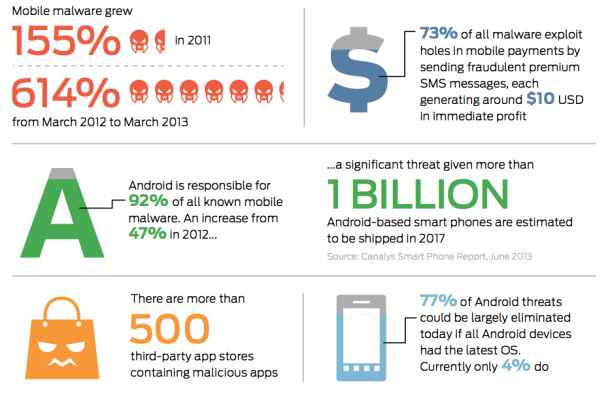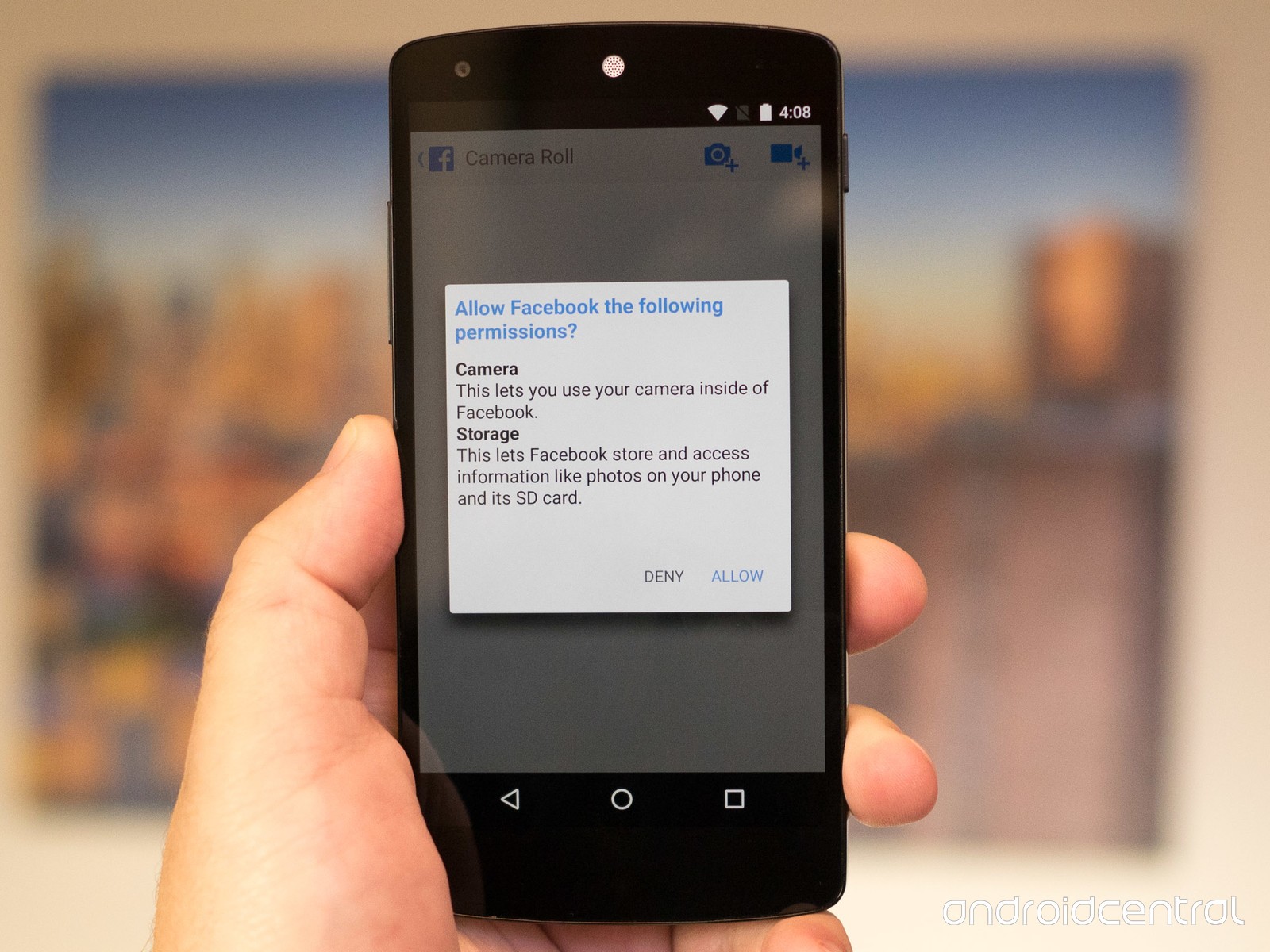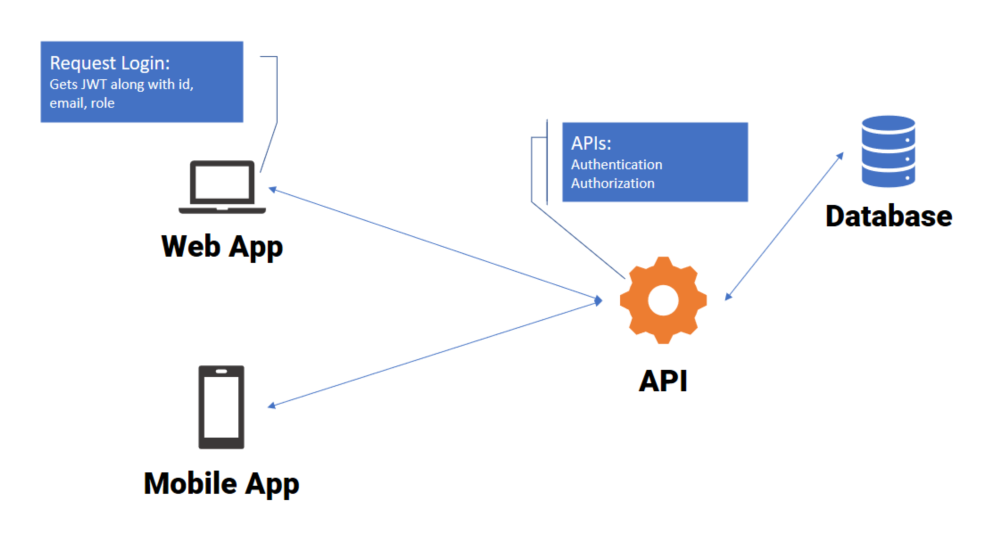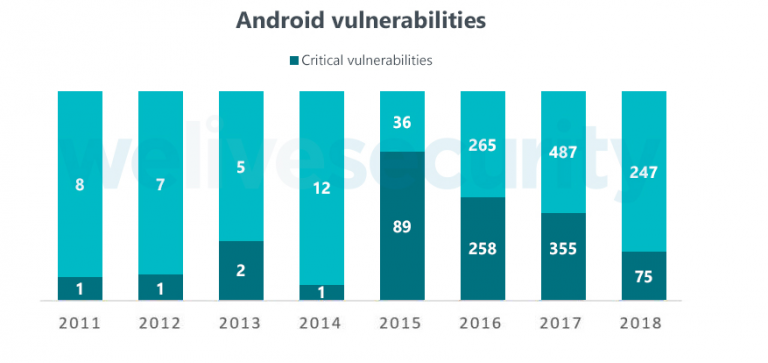Unlock Expert Advice with Zero Commitment.
We’ve Eliminated the Barriers.

The rate of mobile adoption is rising day by day, and along with that, the number of apps on app stores is increasing. Currently, Google play store boasts of having 2.6 million apps, while Apple app store has 2.1 million apps.
But are all these apps safe to use?
The number of mobile malware targeting various mobile devices increased by 54% in 2017.
Along with that, the study shows that 95% of Android devices are affected by malware.

With that being said, how secure is your mobile app?
Smartphone is an inseparable part of our life today. We are using it for everything, from booking tickets to paying bills, keeping up with our health stats and many other things. All this we are doing with the help of various mobile apps available on the app stores.
If these apps stop being secure, then it might create issues like IP theft or fraud, data theft, unauthorized access. Along with that, as an app owner, you’ll face issues such as angry user reviews and loss of revenue and reputation.
Before you start on securing your app, take a quick look at why your app needs to fulfill the proper security standards.
Until a few years ago, you only had to worry about being a victim of cybercrime on your computer. Smartphone users rarely did any kind of banking or online transaction with their smartphones.
But with the improvement of smartphones and reduced data charges, smartphones are being used for everything today. And that leaves the users open to a large number of threats.
Mobile applications today come with a certain degree of inherent security. For example, if Facebook’s app server goes down, the app saved on your phone won’t work. But installing a fake or malicious app from a third party app store, or opening a malicious link or attachment in an email or social media messages can compromise the security of your device.

Even though mobile malware threat is not yet as serious as computer malware, the numbers of threats are still rising every day. According to studies done by Kaspersky Lab mobile security solutions, the number of attacks on mobiles through malicious software is around 116.5 million, double the amount of 2017 which was 66.4 million.
With this kind of rising threat, if you are thinking about developing an app for your business, then you need to follow a certain checklist to make your app safe for your users. But what should be on that checklist?
Below is the checklist followed by our organization when it comes to the security system of mobile applications developed by us. This checklist is the result of extensive research into threats faced by mobile apps and
With this kind of rising threat, if you are thinking of developing an app for your business, then you need to follow a certain checklist to make your app safe for your users.
But what should be on that checklist?
Below is the checklist followed by our organization when it comes to the security system of mobile apps developed by us. This checklist is the result of extensive research into threats faced by mobile apps and the security measures needed to save them and our users from malicious software and threats such as ID theft, phishing, loss of online banking details, etc.
The following checklist can be of real help to you if you are looking for a comprehensive list of the things your app needs to make it safe. So let’s take a look at this mobile app security checklist.
A mobile app is basically a few simple things rolled into one- there is a product code, the business rationale towards the back end system, and the customer side, databases, APIs funneling data between the two, the device its operating framework and the user.
Whether you are a big organization or a small startup, having a mobile application with strong security in an aggressive market can make a big difference for your business.
Here is a mobile app security checklist for you to follow, to give your users complete safety when they use the application.
Your app’s source code can have vulnerabilities. These vulnerabilities can come from developer error, not testing the code properly, or maybe the hackers are simply targeting your app specifically.
Native apps are different from web applications. Web Applications are basically data that is data and software that exists on the server. Native apps are on the other hand have their own codes that reside on the user’s handset once installed. This makes it easy for hackers to attack the mobile.
So how can you make your app secure?
Apps are available on different devices today. So does one security measure mean that it will be secure for all platforms?
Absolutely not.
Based on the device and platform being used, apps need different kinds of security measures. It is said that iOS is more secure than the Android platform. Android being an open source operating system, is more open to threats and problems related to mobile app security. This is why you need to implement different security measures for different platforms and devices.
By giving the users option to choose their own security settings based on their personal preferences, you can provide them with ultimate security standards in your application. This way the app will ask the users permission for accessing different data on the phone, and the user will have the choice to let the app access the data on their phone or deny the request.

This is probably one of the most neglected points when it comes to security of mobile apps. Many mobile application developers use third party libraries to write codes in order to develop their app quickly. Such libraries offer codes which you can use to build their apps. But are these codes secure?
Most of the time these third-party library codes are tampered with by the hackers. Using these codes for your app without testing them first means decreasing the security of your own app. So make sure to test the third party library codes before implementing them in your own app.
It is a general practice of the hackers to embed malicious codes into mobile applications, which will let them access any data in your app and then use it for their benefit.
Implement a tamper-proof technique such as checksums, digital signatures and other techniques to detect violation to your app codes. in your application means getting an alert anytime someone makes any changes to your application code. Having a log of code changes that are done by authorized sources means bad tampering with your app code can be detected easily.
Try to implement different trigger against code changes on different levels of the app. This will give you a caution when any altercations happen to your codes. For example, confirmation of the signature of the application at run time, performing the environment checks, identifying the app installer, etc.
The main challenge any mobile application faces when it comes to security is the interaction they need to do with outer system, through Wi-Fi, cellular system, VPN, non-encoded systems, etc.
While you transfer data from the device to the cloud, it is vulnerable to external attacks and theft. Which is why encode the basic client data such as login information, passwords and any individual information collected by the app.
Putting away the information in scrambled information compartments makes it harder for the hackers to access or use them. Additionally, any information that is pointless should never be stored away within the phone memory.
Securing the data during transit and storage is a crucial part of the security checklist for your app.
Repeated application testing is one of the ways you can make sure that your mobile app is secure to use. On each phase of development, you need to thoroughly test the app to eliminate any security problems.
While testing the mobile app, test it from both the client and the server side. This way you can figure out the vulnerabilities on both ends, and how much load the app can actually take.
Updating your app on regular intervals makes it easier to figure out the holes in your codes and patch them up. But check the updated versions as well before you release it on the app store.
An unavoidable part of any mobile app security checklist, the cryptography tool and techniques have more effect over the security measures of your app than you think. To make your app most secure, use the latest cryptography tools and techniques. The use of backdated protocols such as MD5 and SHA1 are not enough to provide ample mobile security.
Developers need to use cutting edge encryption APIs, for example, 256-piece AES encryption joined with SHA-256 for hashing. App developers can put resources into danger displaying, penetration testing, etc.
Most hackers attack with the intent of stealing information, and almost 72% of this attack happens on backend portion of any app. It is crucial for you to protect the backend of your app as it is the storage for all your data which you need to collect to run the app.
In many cases, people store all the information remotely or on cloud server. This exposes the backend to certain vulnerabilities and puts the information of your users and employees at risk.
Just like the frontend system, you can eliminate the issues and vulnerabilities of the backend system through security testing and data encryption before deployment.
Data encryption is an effective way for you to secure sensitive user data before storing it on the backend. It translates data into another form or code, that can only be read by authorized parties.

It is easy to encrypt Data or plaintext using encryption algorithm and encryption key. You can access/read the encrypted data, or ciphertext if you decrypt the data with the proper key.
Make sure to encrypt whatever data you collect through your app. And only authorized parties have access to the encryption key.
Always use authorized APIs in your app. The absence of authorized APIs can give hackers access to use your information. Make sure you check the username and password, or if the token is signed and not expired is involved in a proper authentication process.
Through the authorization process, the resources are check to see what your user can access and modify and what they can not access at all. Both authentication and authorization process are interdependent. And you can use them together to give only the right users access to your API. So make sure that Authorized API is an important part of your mobile app security checklist.

Mobile apps face weak authentication protocol as one of the top vulnerabilities. As an app owner or developer, you need to give authentication utmost priorities when it comes to security of your mobile app.
Create a strong password policy so that it cannot be broken easily enough. Passwords are one of the most important and common modes of authentication so make sure that it can’t be broken easily.
Use multi-factor authentication process. It can be through OTP via text message or through authentication code sent over email. You can make the multi-factor authentication process even more secure by the biometric process.
To secure the source code for your app, give only a limited number of people the privilege to access or modify it. By keeping this network as small as possible you will be limiting the chances of code- tampering and insertion of malicious codes into your source codes.
This may seem like a trivial point in this checklist, but the fewer people know the codes, the better it is for your app’s security.
It is not enough to just build a secure mobile app, but you have to keep updating it to keep it secure for your users to use.
Not updating your app makes it vulnerable to newer threats and types of attacks by the hackers. Continuously updating the app and patching the holes in its code is the best way to keep your app secure.
Let’s take a look at one of the most important differences between Android and iOS devices-
Android os depends on an open source code, which means anyone, even the user of an Android device can tinker with the operating system. On the other hand, iOS is a closed system, and no one can modify the source codes of an iOS device.
Too much tampering with Android system codes and you can create a system vulnerability that can be exploited by the hackers. iOS on the other hand for being a closed system is not easy to target for the hackers.
The platform you’re creating for doesn’t diminish the workload as far as security testing and developing applications safely is concerned. There is more ‘dirt’ on Android than iOS.
Even though Apple has a stricter control over which apps get published and distributed through their official app store, there are still some incidents which showed that Apple’s app verification technique may not be completely foolproof. iOS app developers need to have the same attention to security detail while developing an app as an Android app developer should have.
Google, on the other hand, has an open-minded approach to app publishing on its app store. As a result of which many apps containing malware gets published and uploaded on the phone before the user even knows.

Which is why instead of blindly trusting the credibility of the app stores and their security check, secure your mobile app from the very beginning, implementing it on every level of your app so that hackers can not use your app for their malicious intents.
The top reason why app developers fail to secure their app is the lack of QA and testing. In their hurry of developing and releasing the app, they skip over this process or go through it in a half-hearted manner.
But this is the most important step towards making your app more secure.
After you’ve developed your app, you need to run it through proper testing. Automated and manual testings are the two kinds of tests that any app should go through before you launch them.
Your app is a combination of different components that are run together with the help of codes. By running your app through proper tests, you can figure out if there are any problems with the codes. One single flaw in your coding can leave your app open to be exploited by a hacker.
Proper testing of your app is not only going to give your mobile app a proper security measure, but it will also give you a look into its functionality. It is an important way to ensure that your app can be downloaded, installed and used without any issues.
With the constant rise in popularity of mobile phones, users are continuously becoming more app-dependent. And hackers out there are exploiting this dependency to steal personal information, banking information to use it for their own benefit.
In this scenario, having a strong security strategy for your mobile app is not only going to give your user a sense of security but also boost the reputation of your own organization. In addition to that, it will save you the immense cost of fixing a mobile security breach.
Any Mobile App Development Company you hire should apply this mobile security system industriously to ensure your mobile developers can thoroughly consider unintended outcomes of compromised app security. Conveying a simple to-utilize application will diminish the brand esteem in the event that you put client or enterprise data at risk.
___________________________________________________________
We have been featured as a Top App Design and Development Company on Designrush. Check out some of their great content.
We’ve Eliminated the Barriers.
We stand by our work, and you will too.